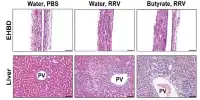Scientists at the Dana-Farber Cancer Institute and the Centers for Disease Control and Prevention have found new evidence of possible threats to the health of cigarettes and marijuana smoke chemicals. Marijuana has also been believed to be one of the best leisure drugs available. This is perhaps true; several credible research reports confirm the conclusion that cocaine, opium, alcohol, and even cigarettes are more harmful to the wellbeing of consumers than marijuana.
In a study released by EClinicalMedicine, researchers note that people who smoked only marijuana had a variety of smoke-related toxic chemicals in their blood and urine but had lower levels than those who smoked only cigarettes and marijuana or tobacco. Two of these compounds, acrylonitrile, and acrylamide, are considered to be extremely poisonous. The authors have observed that exposure to acrolein, a chemical created by burning a number of ingredients, improves cigarette smoking but not marijuana smoking and leads to cardiovascular disease in tobacco smokers.
Researchers reports on new evidence of health threat from chemicals in marijuana and tobacco smoke. Marijuana smoking found to raise levels of potentially harmful chemicals but to a lesser degree than tobacco smoking.
The results suggest that elevated levels of acrolein may signal an increased risk of cardiovascular disease and that limiting exposure to the chemical may minimize the risk. This is especially relevant for HIV-positive individuals, the virus that causes AIDS, the high smoking rate of cigarettes, and the elevated risk of heart disease in this population.
Smoking weed or marijuana routinely (joint daily) will destroy bronchial passage cells that protect the body from inhaled microorganisms and reduce the capacity of immune cells in the lungs to fend off fungi, bacteria, and tumor cells. For people with already compromised immune systems, this means a rise in the risk of serious respiratory infections, including pneumonia, which is frequently lethal in AIDS patients.

“Marijuana use is on the rise in the United States with a growing number of states legalizing it for medical and non-medical purposes — including five additional states in the 2020 election. The increase has renewed concerns about the potential health effects of marijuana smoke, which is known to contain some of the same toxic combustion products found in tobacco smoke,” said the senior author of the study, Dana Gabuzda, MD, of Dana-Farber. “This is the first study to compare exposure to acrolein and other harmful smoke-related chemicals over time in exclusive marijuana smokers and tobacco smokers, and to see if those exposures are related to cardiovascular disease.”
The study included 245 HIV-positive and HIV-negative participants in three HIV infection trials in the United States. (Studies involving people with HIV infection were used due to elevated smoking rates of tobacco and marijuana in this group.) Researchers gathered evidence from the participants’ medical history and survey reports and tested their blood and urine samples for compounds created by nicotine breakdown or by burning tobacco or marijuana. The combination of these data sets allowed them to monitor the prevalence of particular tobacco or marijuana-smoking harmful chemicals and to see whether any were associated with an elevated risk of heart disease.
Investigators found that participants who smoked marijuana primarily had higher blood and urine amounts with many smoke-related hazardous chemicals such as naphthalene, acrylamide, and acrylonitrile metabolites than non-smokers did. However, in marijuana-only smokers, concentrations of these drugs were smaller than in cigarette smokers.
Researchers have observed that acrolein metabolites—substances produced by the breakdown of acrolein—were elevated in tobacco smoking, but not in smokers of marijuana. This rise was associated with cardiovascular disease regardless of whether people smoked cigarettes or had other risk factors.
“Our findings suggest that high acrolein levels may be used to identify patients with increased cardiovascular risk,” Gabuzda said, “and that reducing acrolein exposure from tobacco smoking and other sources could be a strategy for reducing risk.”
















